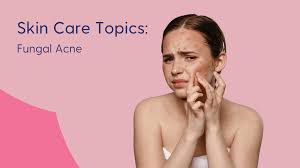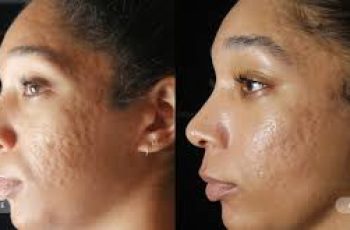
Fungal Acne: The Hidden Culprit Behind Stubborn Breakouts
If you’ve found yourself tirelessly battling persistent breakouts that just won’t budge—despite cycling through an arsenal of skin care products, over-the-counter acne treatments, dermatologist-prescribed creams, and dietary changes—there’s a possibility that what you’re dealing with isn’t actually acne at all. Instead, the root cause of your skin troubles could be something less commonly known but increasingly recognized: fungal acne. Scientifically referred to as Malassezia folliculitis or Pityrosporum folliculitis, this condition mimics traditional acne so closely that it’s often mistaken for it. However, its origin, symptoms, and treatment are entirely different.
Let’s dive deep into what fungal acne is, how to identify it, what causes it, and most importantly, how to treat and prevent it effectively—especially if it has been flying under the radar in your skincare routine all along.
What Exactly Is Fungal Acne?
Fungal acne is not true acne in the medical sense. While acne vulgaris—the more common form of acne—is caused by bacteria, hormonal imbalances, and clogged pores, fungal acne results from an overgrowth of yeast on the skin, particularly within the hair follicles. The yeast responsible, known as Malassezia, is naturally present on everyone’s skin. It usually coexists peacefully within the skin’s microbiome. However, when the balance of microorganisms on your skin is disrupted, this yeast can multiply uncontrollably, leading to a condition where the hair follicles become inflamed, forming what looks like acne lesions.
These inflamed bumps are small, often itchy, and can appear suddenly, usually in groups or clusters. They are most commonly found on areas of the body that trap heat and sweat, such as the forehead, chest, shoulders, upper back, and sometimes even the arms. Because these bumps can resemble traditional acne, many people spend months—if not years—using acne treatments that don’t work and may even make the situation worse.
Common Causes and Triggers of Fungal Acne
Understanding what causes fungal acne is crucial to treating it successfully and preventing it from recurring. There are several known factors and triggers that can lead to or worsen this condition:
1. Overproduction of Sweat and Moisture
The Malassezia yeast thrives in warm, moist environments. Excessive sweating—whether from exercise, hot weather, or stress—can create ideal conditions for yeast to grow. When sweat is trapped under tight-fitting or non-breathable clothing, the risk increases significantly.
2. Tight or Occlusive Clothing
Clothing that doesn’t allow your skin to breathe can trap moisture and heat, especially when worn during workouts or in humid environments. This creates a breeding ground for yeast.
3. Hormonal Imbalances
Conditions such as polycystic ovary syndrome (PCOS) or insulin resistance can alter the skin’s oil production and immune response, making some people more vulnerable to yeast-related skin issues.
4. Use of Antibiotics
Ironically, taking antibiotics for bacterial acne may worsen fungal acne. Antibiotics disrupt the balance of bacteria on the skin, which can allow yeast populations to grow unchecked.
5. High-Sugar or High-Carb Diet
Yeast feeds on sugar. Diets high in simple carbohydrates, refined sugars, and processed foods can contribute to an internal environment that supports yeast overgrowth on the skin.
6. Skin Care Ingredients
Certain ingredients commonly found in moisturizers, sunscreens, and cosmetics—such as esters, fatty acids, oils (especially those derived from plants or algae), and polysorbates—can act as food sources for Malassezia. Ironically, some products labeled “non-comedogenic” may still promote fungal growth.
7. Warm and Humid Climates
If you live in a tropical or humid environment, your skin is more susceptible to conditions that encourage the overgrowth of yeast. Summertime is often when flare-ups become most noticeable.
How to Identify Fungal Acne
Though it shares similarities with bacterial acne, fungal acne has a few distinct characteristics:
Itchiness: Unlike typical acne, fungal acne is often very itchy.
Uniform bumps: Fungal acne tends to produce pustules or papules that are all roughly the same size and shape.
Clustering: The bumps tend to appear in clusters, especially on the chest, back, and forehead.
No blackheads or whiteheads: Unlike acne vulgaris, which features comedones (blackheads and whiteheads), fungal acne lacks these.
Ineffectiveness of standard acne treatments: If nothing seems to work, especially benzoyl peroxide or salicylic acid, fungal acne might be the culprit.
Fungal Acne vs. Acne Vulgaris vs. Hormonal Acne
Feature Fungal Acne Acne Vulgaris Hormonal Acne
Cause Overgrowth of yeast (Malassezia) Bacterial overgrowth, clogged pores Hormonal imbalance
Appearance Small, itchy, uniform bumps Mixed: comedones, pustules, cysts Painful cysts, especially jawline
Common Locations Forehead, chest, back Face (T-zone), back, shoulders Chin, jawline, neck
Triggers Heat, sweat, humidity, antibiotics Hormones, stress, diet, skincare Menstrual cycle, PCOS, stress
Response to acne meds Poor Generally effective Hormone therapy, retinoids
Effective Treatments for Fungal Acne
Successfully treating fungal acne often requires a complete shift in the way you approach skin care. Traditional acne treatments won’t work—some may even worsen the condition by feeding the yeast. Instead, antifungal therapies are the key:
1. Antifungal Shampoos
These can be applied not only to the scalp but also directly on the skin:
Ketoconazole (Nizoral)
Selenium sulfide (Selsun Blue)
Zinc pyrithione (Head & Shoulders Clinical Strength)
Let the shampoo sit on your skin for 5–10 minutes before rinsing to allow the active ingredients to work.
2. Topical Antifungal Creams
Look for creams or gels with:
Clotrimazole
Terbinafine (Lamisil) Apply these directly to the affected areas once or twice a day, depending on the severity.
3. Sulfur-Based Washes
Products containing sulfur, like Derma Made Medi Wash, have both antifungal and anti-inflammatory properties. Sulfur helps reduce the population of yeast while calming irritated skin. This type of wash is also useful in managing other conditions such as rosacea.
4. Oral Antifungal Medications
For severe or persistent cases, a dermatologist might prescribe:
Fluconazole
Itraconazole
These systemic antifungal drugs are effective but should be used under medical supervision due to potential side effects.
Long-Term Prevention and Maintenance
Once you’ve cleared up a fungal acne breakout, the next step is preventing future flare-ups. Here are several steps you can take to reduce recurrence:
Shower immediately after sweating and change into clean, dry clothing.
Use antifungal shampoo weekly as a preventative body wash, especially during humid seasons or if you exercise frequently.
Avoid skin care products with ingredients that feed yeast, such as coconut oil, lauric acid, and polysorbates.
Evaluate your diet: Reduce sugar intake and consider incorporating more antifungal foods like garlic, coconut oil (internally), and fermented vegetables.
Discuss hormonal imbalances with a healthcare provider if you suspect conditions like PCOS are at play.
Final Thoughts: Don’t Let Fungal Acne Fool You
Persistent breakouts that don’t seem to respond to any treatment may not be acne at all. If you’ve tried everything under the sun and your skin remains bumpy, red, and itchy—particularly on your chest, back, or forehead—consider the possibility of fungal acne. It’s more common than many realize and, thankfully, is highly treatable once correctly diagnosed. With the right approach, including antifungal treatments, lifestyle modifications, and preventative care, you can get your skin back on track.
When in doubt, consult a dermatologist to confirm the diagnosis and receive a treatment plan tailored to your specific skin needs. After all, effective skin care starts with understanding what your skin is really dealing with.


